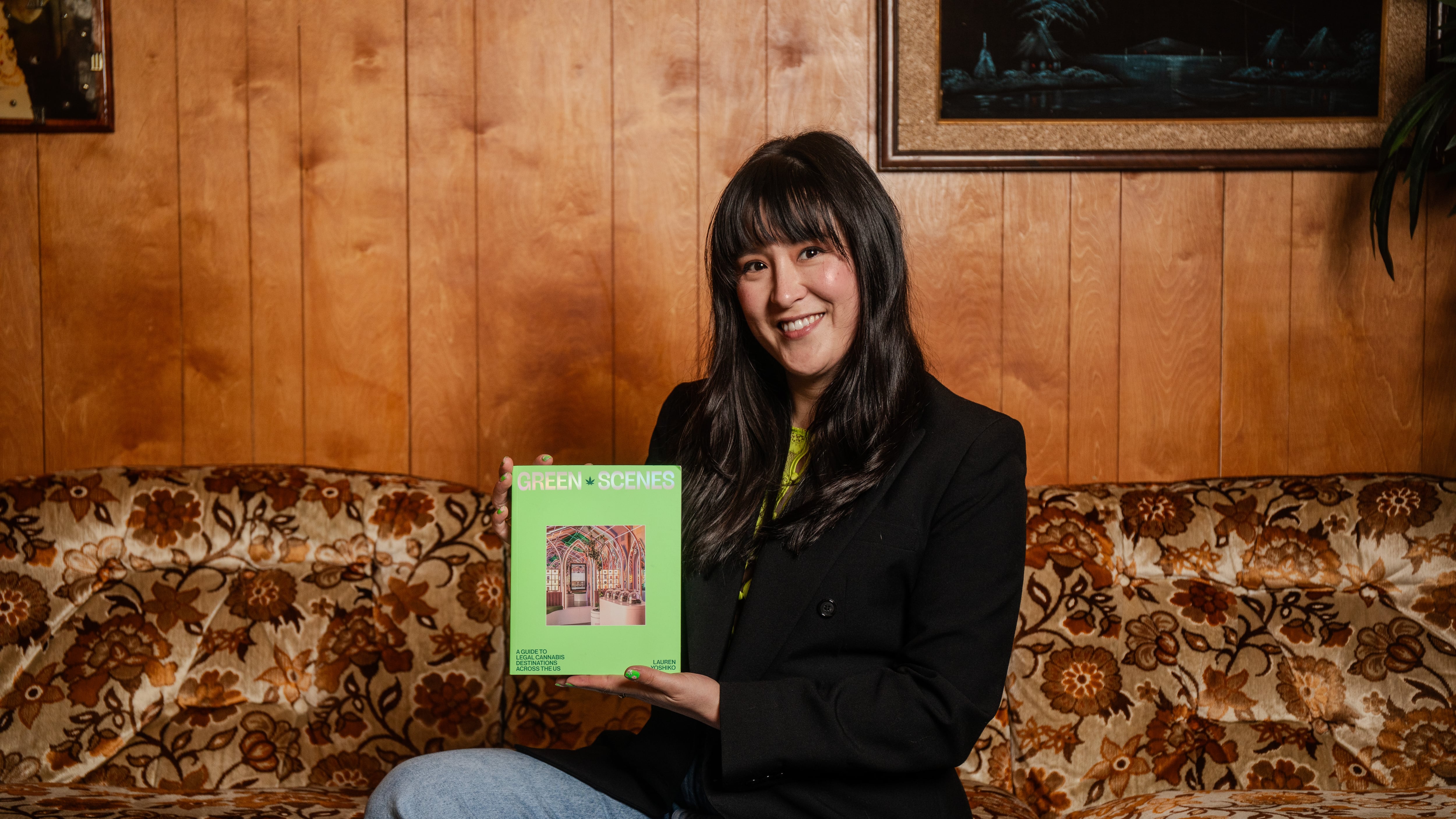For decades, the energy around cannabis was generally grim. Users were considered burnouts, dealers were labeled as criminal thugs, and growers were secluded to deep woods and arid basements. And while in sheltered circles those attitudes remain even a decade into Oregon’s recreational legalization, the general vibe around cannabis has shifted from “gateway drug” to ubiquitous therapeutic found in everything from hair conditioner to doggy treats. And considering the number of Black and Brown Americans who were entangled in America’s racially biased war on drugs, that’s a pretty intense shift.
But it’s a shift that frequent WW contributor (and prohibition-era Potlander columnist) Lauren Yoshiko (aka Mary Romano) capably unpacks in her new book, Green Scenes: A Guide to Legal Cannabis Destinations Across the U.S. (Hardie Grant, 304 pages, $29.99). From immersive cannabis museums to dispensaries that exclusively feature socially equitably farmed plants, Green Scenes is more than a guidebook, it’s a perfect snapshot of America’s developing cannabis culture.
WW: What’s your definition of a “green scene”?
Lauren Yoshiko: It may be a city with a decent mix of shops and weed-friendly activities, or a place with just one strictly weedy destination, but a culture that appeals to most people who enjoy cannabis. These hot spots are always changing based on elements like shifting legislation and how much the region supports thriving small businesses. Back in 2018, Portland was a more bustling scene. Today, it doesn’t take up as many pages as it could.
Were you influenced by the classic Black Motorist Green Book guide?
Initially we didn’t think about this as a book you carried with you as much as a conversation starter on your coffee table. However, the more we got into it, the more utilitarian it became, providing people with information to better navigate each area with breakdowns of basics like possession limits at the start of each state’s section. I think there are ways I could’ve added more on-the-ground tips to make it more useful as a cannabis lover moving through the country, like the Green Book, but that would’ve been a different book.
When did you begin compiling sites to include in Green Scenes? Were you on the weed road trip of our dreams for a couple of years?
I wish. There was no travel budget for me to write this. I have visited many of these states over the years, though, and was able to lean on past experiences. I sent dozens of emails a day, was on daily calls with folks all over the country, and spent many hours poring over Reddit threads and IG comments to glean local insights. Fortunately, by this time in my career, I have weed-savvy confidants coast to coast who helped kick off my research with recommendations in most regions.
Did any of the areas you profiled surprise you?
Totally. Seeing quite bougie, well-designed shops in Montana and Arizona definitely spoke to how developed the cannabis-consuming community has become. It’s also depressing in some cases to see how undeveloped certain places are due to bottlenecked programs or really challenging, expensive licensing rules. The New Jersey and New York sections are surprisingly sparse.
I found so many of these spots breathtakingly worth the mileage. Is there a specific person, place or service that stole your heart in a big way?
I’m definitely going to travel to make it to a Cloth & Flame dinner in Arizona sometime. They set up beautiful events in the middle of a national park, serving stunning infused dinners under the stars. Same with chef Nikki Steward’s work in the Midwest—she created a time-traveling event at one of Detroit’s historical mansions with infused versions of what her grandmother would’ve served at a soirée back in the day, with actors dressed like it was the 1920s. Rising Roots farm in New Mexico also comes to mind—the owner does a lot of volunteering with horse rescues, and there are three horses that live on the cannabis farm. I can’t get over that visual.
What was your biggest takeaway from producing this book?
Cannabis is a connector. Although you might’ve heard something about the “green rush” and assume everyone in the biz is making good money, very few are. Most of the people going out of their way to do cool, special things are doing so because they love and believe in this plant, not because they expect a big payday. They pay more taxes than any bar you’ve ever visited. They have to pay for more security than any jewelry shop, and they can’t advertise like any other small business. It’s really freaking hard, and the people who go out of their way to do something unique all care about this work in a special way.
